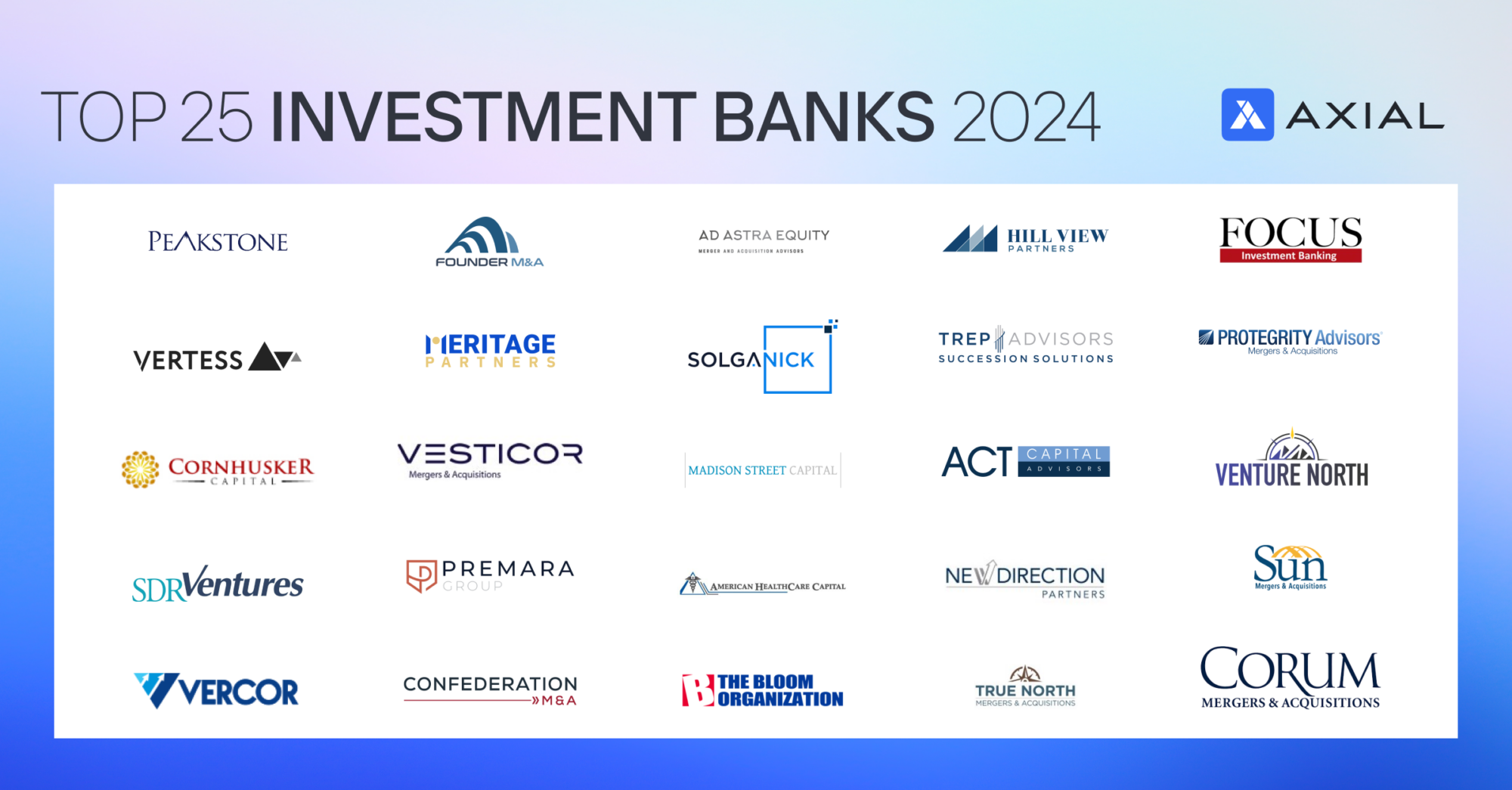
Top 25 Lower Middle Market Investment Banks | 2024
Axial is excited to release our 2024 Lower Middle Market Investment Banking League Tables. To assemble this list, we reviewed…
The M&A industry regularly reminds us that it’s tough to sell any business. Chris Sider of the Exit Planning Institute (EPI) recently estimated that only 20-30% of marketed businesses end up selling. BizBuySell’s 2017 national report suggests that only 20% of listings sold in 2016. Other investment banks and trade associations believe that only 10-15% of businesses complete transactions.
Why such dismal statistics? The typical answers are logical enough: sellers are not emotionally ready to leave their “baby”; poor financials mean there are few qualified buyers; the seller’s local service/product is not scalable; and/or their company is facing unknown risk in a shifting marketplace.
Skilled advisors can help sellers build value or manage the most challenging transactions, which is why we trumpet these statistics. But it’s very important to understand that there are serious problems with the data itself.
Here are three reasons the M&A industry may be missing the point:
1. The data used is based on a poor sample: Our interviews with multiple competitors in the M&A marketplace reveal they reported very few or none of their closed transactions to an independent database during the past decade. While sources such as G4 Data and Pitchbook are trying to address this situation, deal activity in the lower end of the middle market (less than $25 million revenue) is largely missing from the analyses noted above. How can we make decisions based on such questionable data?
2. Everyone transitions and transacts: Even when a company owner doesn’t use an advisor or investment banker, a transition eventually will take place. After all, business owners can’t live forever, so something will happen even if the original M&A goal isn’t met: the business may be sold to a partner or other business colleague; the company may be passed on to a family member(s); pieces of the business may be sold as assets to another entity; or the seller may close the business. Though each of these transactions could be strengthened with advice and consultation from an M&A professional, in each of these cases a transaction does occur.
3. The 70-90% of business owners who don’t use advisors are never included in the statistics: These owners are the ones who could most benefit from professional advice and consultation. Why? Because they likely have significant room for improvement that can be cost effectively addressed through building value, improving reporting, and increasing market awareness. This perspective can help owners better position themselves for greater success and the best transaction possible.
It is said that in the absence of fact, a firmly held belief will suffice. But an understanding of the facts (or in this case the inaccuracy of the statistics) can help business owners better position themselves for success in whatever transaction eventually does take place. The statistics may never catch up with reality, but understanding that and reframing the opportunity will be beneficial to sellers, buyers, and advisors.
